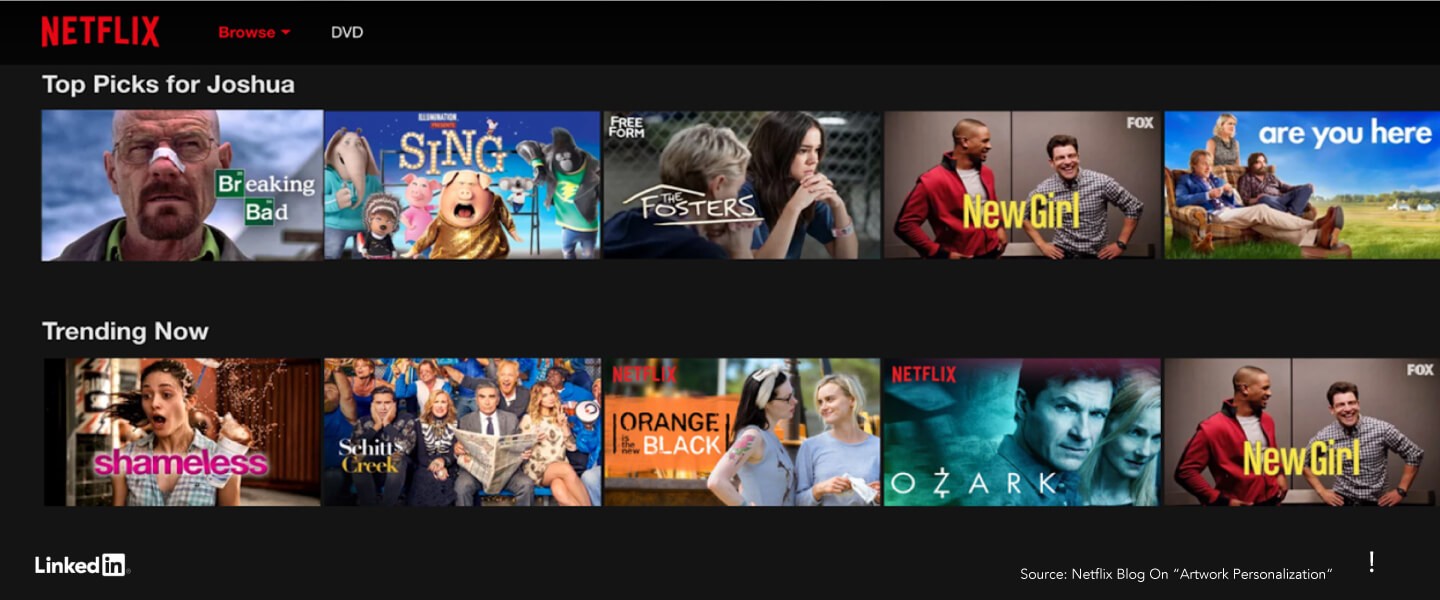
The Death Of Personas
Most marketers claim to be customer-centric.
Of course they do: no sane marketer would proudly announce that they’re not customer-centric.
But we shouldn’t ask marketers if they’re customer-centric – we should instead ask their customers.
When you ask customers how customer-centric they find the marketing they receive, they unanimously suggest the same thing: the vast majority is irrelevant.

Obviously, marketers want to produce marketing that’s relevant to customers. But, most of the time, they don’t know their customers well enough to do so.
As a result, marketers end up talking about what they know best:
• Their product development
• Their advertising campaign
• Their sales strategy
However, one class of companies – often referred to as direct-to-consumer (DTC) companies – has mastered truly customer-centric behavior. By studying them, marketers can glean insights and practices they can put to good use.
One of the best known DTC companies is Netflix, which maintains a direct streaming -- and billing -- relationship with most of its customers. Netflix analyzes past subscriber viewing behavior in order to make data-informed recommendations about what a subscriber might enjoy watching in the future.
The entire Netflix experience is built around the customer.
Netflix is so customer-centric that there’s no single Netflix; instead there are 130+ million “Netflixes” because no two Netflix subscribers see the same home screen. For example, I see different recommendations than Joshua does and Joshua sees different recommendations than my mother does. In this respect, Netflix is radically customer-centric.
Real Customer-Centric Marketing Is Radically Individualistic
We have to dig deeper to understand what enables Netflix to be so customer-centric.

First, let’s further explore how Netflix recommendations work.
Say you like to watch romantic comedies like Serendipity, Eternal Sunshine Of The Spotless Mind, and While You Were Sleeping. Based on your past viewing behavior, Netflix will classify you as a “romantic persona.” When you scroll over the film Good Will Hunting, Netflix will tease out the romantic storyline, showing you a picture of Minnie Driver and Matt Damon kissing.
Or assume you like to watch comedies like Arrested Development, Zoolander, and Anger Management. Netflix will categorize you as a “comedic persona” and show you a picture of Robin Williams when scrolling over Good Will Hunting.

In other words, even the smallest detail is informed by data.
Let’s now return to the realm of B2B marketing to see how marketers build personas to develop relevant marketing. Persona building is entirely different in B2B marketing. What generally happens is marketers -- and maybe salespeople -- get together in a room armed with a some third-party data and create personas out of “thin data.” We say “thin data” because it’s supplied by a third party and is static, which means the personas are outdated even before they’re created. This explains why the majority of potential buyers say that the marketing they receive is irrelevant.
Conversely, Most Personas Are Informed By Guesswork
Static personas with no data are evolving into dynamic personas driven by first-party data.

So how can marketers – who do not have direct access to first-party data like Netflix – act more like Netflix?
That’s where LinkedIn can help with its free Website Demographics Pixel. Our pixel lets you see which professionals – in an anonymized fashion -- are coming to your website, giving you a first hand, dynamic understanding of your potential buyers. Once you’ve used a data-informed approach to establish who your potential buyers are, you can start developing relevant marketing that resonates with them.
To be clear, you don’t need to be Netflix. After all, you’re probably not a global entertainment company. But every company should try to understand their customers as deeply as possible. You can start that process by re-inventing the way that you build personas.
Personas are dead, long live personas.

To deliver relevant ads, understand the who.
Data-driven personas allow you to truly understand what your customer cares about.